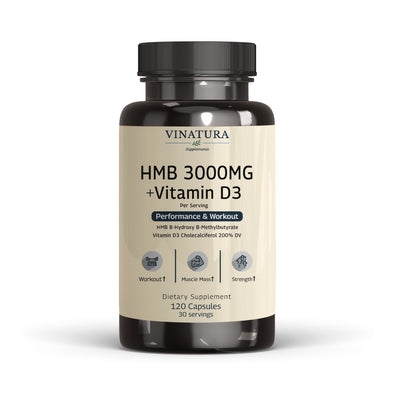
What are the Benefits of TUDCA for Body Building?
Choosing the right nutritional supplements is crucial in bodybuilding. One of the supplements garnering attention from fitness enthusiasts is TUDCA (Tauroursodeoxycholic acid). This article explores the benefits TUDCA can provide for bodybuilding enthusiasts and athletes.
Before exploring further, please read the disclaimer located at the end of this webpage.
Key Takeaways
- TUDCA (Tauroursodeoxycholic Acid) is a natural bile acid found in humans and animals. It supports liver function, enhances cellular function, and improves digestion.
- TUDCA has numerous benefits for bodybuilding by protecting liver function, reducing the risk of cell degeneration, and enhancing muscle strength through protein synthesis.
- TUDCA is effective for bodybuilding when used at a dosage of 250-500 mg/day, regularly, and preferably consumed 30 minutes before workouts to achieve optimal performance.
Is TUDCA Good for BodyBuilding?

Yes, TUDCA is beneficial for bodybuilding.
Tauroursodeoxycholic Acid (TUDCA) is the taurine conjugate of ursodeoxycholic acid (UDCA), a hydrophilic bile acid approved by the United States Food and Drug Administration for the treatment of certain liver and gallbladder diseases [1].
TUDCA is widely used for its hepatoprotective function, reducing stress on the liver and improving overall health.
Although TUDCA has not been directly proven to be related to improved performance in bodybuilding, it indirectly benefits bodybuilders by improving liver function, which is particularly important for those using hepatotoxic steroids or other liver-stressing supplements.
Moreover, this supplement not only plays a crucial role in muscle recovery and development, reducing muscle tissue damage during workouts, but TUDCA also aids in fat loss and supporting cardiovascular health through mechanisms such as cholesterol reduction and preventing plaque formation in arteries.
What are the Benefits of TUDCA for Bodybuilding?
Exploring some key benefits of TUDCA for bodybuilding will help you understand the importance of this supplement:
Supports Liver Function

TUDCA is well-known for protecting the liver, preventing harmful metabolic byproducts, reducing oxidative stress, and limiting liver inflammation and damage.
This benefits bodybuilders, especially those following high-protein diets during the muscle-building process.
TUDCA inhibits the production of oxidative radicals, reduces oxidative stress, and alleviates endoplasmic reticulum (ER) stress [1], preventing cell damage and serious liver complications.
Additionally, TUDCA has been demonstrated to reduce liver enzymes by up to 41% in a study involving 27 patients who continuously used 500mg TUDCA twice daily for 3 months [2].
Following the trial period, the effects of TUDCA on liver serum enzymes were evident after 1 month.
They reached maximum efficacy after 3 months without causing liver toxicity and improving symptoms of indigestion in patients with chronic hepatitis.
Improves Insulin Sensitivity
Insulin sensitivity is crucial for bodybuilders to efficiently utilize carbohydrates for energy and muscle building, rather than accumulating them as fat, which leads to excess fat formation [4].
A study evaluated the impact of TUDCA bile acid on insulin secretion through glucose-stimulated insulin secretion (GSIS) from pancreatic β-cells [3]. The results showed that TUDCA enhances GSIS through the cAMP/PKA pathway.
Enhances Fat Loss
Besides muscle, body fat percentage is a significant factor in bodybuilding. TUDCA has been shown to restrict metabolic disorders related to obesity by inhibiting lipid accumulation, ER stress, inflammation, and apoptosis in fat cells [5]. In the same study, TUDCA was found to enhance fat loss by up to 10%.
Moreover, supplementation with taurine, an amino acid with demonstrated physiological properties, has been shown to reduce fat, increase insulin secretion, and improve glucose uptake and insulin activity in obese mice fed a high-fat diet (HFD) [6].
Explore more: The Benefits of TUDCA for Weight Loss: Is It Really Effective?
Reduces Muscle Damage
Muscle tissue damage often occurs during intense physical training. While not necessarily a bad sign, microtrauma can lead to inflammatory reactions, activating repair mechanisms and muscle growth. However, frequent activity of this nature can affect the muscle recovery process.
Furthermore, TUDCA's mechanism of reducing ER stress through its anti-inflammatory properties also yields improvements in muscle recovery rates by up to 20%, reducing oxidative stress occurring in muscle tissues and limiting exercise-induced muscle inflammation at high intensities [7].
TUDCA also protects against dexamethasone-induced muscle atrophy by improving muscle differentiation and protein synthesis and reducing protein degradation and programmed cell death processes in bone muscle [8].
This is advantageous for bodybuilders to maintain muscle mass during prolonged periods of high-intensity training.
Muscle Growth
TUDCA promotes muscle growth by supporting protein synthesis, which repairs and builds new muscle tissue.
Studies have shown that TUDCA encourages the restoration of overall cellular homeostasis, contributing to the optimization of protein synthesis processes [9].
It stabilizes the endoplasmic reticulum network, an important intracellular component crucial to protein synthesis.
How Does TUDCA Work for Bodybuilding?

The body releases TUDCA into the intestine through the bile ducts, where it is metabolized into Ursodeoxycholic Acid (UDCA) combined with taurine in the lower intestine and then returned to the liver to produce TUDCA bile acid.
This secondary bile acid will then return to the intestine to support digestion, break down cholesterol, process fat-soluble vitamins, and destroy harmful bacteria.
Specifically for bodybuilding, the action of TUDCA lies in reducing and preventing the formation of gallstones. A study conducted on mice showed that TUDCA helps inhibit cholesterol absorption in the gallbladder, enhancing the ability to dissolve cholesterol in bile.
Additionally, it maintains the gut microbiota to promote bile acid synthesis while reducing the risk of liver inflammation caused by lipopolysaccharides in the blood [10]. This mechanism benefits bodybuilders' liver, digestive system, and nutrient absorption.
Furthermore, Tauroursodeoxycholic Acid also helps inhibit the apoptosis process of cells by disrupting the cell death risk of the mitochondria.
This bile acid type can release cytochrome C, activate caspases, fragment DNA and nuclei, and inhibit the P53 metabolic process while also inhibiting oxidative radicals, improving stress-induced tension in the endoplasmic reticulum (ER) [11].
You also read: TUDCA for Sibo: Is It Effective?
How to Maximize Bodybuilding Effects by TUDCA?
Compared to specialized muscle-enhancing supplements, TUDCA primarily supports liver function, enhances cellular function, increases muscle strength, and minimizes the risk of injury during high-intensity training.
To maximize the effectiveness of TUDCA for bodybuilding, the recommended dosage for gym enthusiasts is 250-500 mg/day.
However, there is no specific dosage of TUDCA for bodybuilders. Individuals should start with a low dosage to assess the body's tolerance and adaptation, then gradually increase the dosage corresponding to the intensity of their training.
The frequency of use depends on training goals, dietary habits, and health status. It's important to seek advice from fitness experts or trainers to ensure safe and effective usage.
Taking a dose approximately 30 minutes before gym sessions can help increase bile flow and reduce liver enzyme levels during workouts. Dividing the dosage into 2-3 times a day can maximize effectiveness. Combining TUDCA supplementation with Whey protein or other compounds like Creatine and β-alanine can yield rapid results.
In terms of safety, TUDCA has been used in various conditions, from primary biliary cirrhosis, liver fibrosis, primary sclerosing cholangitis, and chronic hepatitis C to polycystic liver diseases, intrahepatic cholestasis of pregnancy, and fatigue in chronic patients, with all studies confirming its safety.
However, mild gastrointestinal side effects such as diarrhea, abdominal pain, nausea, rare rash, and itching may occur [12].
Other TUDCA Benefits for Bodybuilder's Health
Besides supporting liver function and muscle cells, TUDCA also improves health and physique for sports enthusiasts through benefits such as:
- Enhanced Digestive Function: TUDCA enhances microbiota health by promoting strong anti-inflammatory reactions, maintaining a balanced gut environment, and improving overall digestive activity [13].
- Increased Focus: TUDCA enhances concentration and reduces mental fatigue during training by reducing stress signals in the brain and decreasing the production of reactive oxygen species (ROS) [14].
- Eye Health Protection: TUDCA helps improve retinitis pigmentosa (RP). A study on mice showed that TUDCA supplementation preserves cone and rod cell function, improves vision, and prevents cell death risks [15].
- Blood Sugar Balance: TUDCA reduces cellular stress on the endoplasmic reticulum (ER), limiting conditions like unstable blood sugar levels that can lead to diabetes. The research observed a 43% decrease in blood sugar levels in patients using TUDCA, improving glucose metabolism and blood sugar control [16].
You also may like: 7 Best TUDCA Supplements for Liver & Biliary Health
Conclusion
TUDCA is a supplement that can benefit individuals engaging in physical exercise, especially those training to build muscle. It can help improve liver health, enhance bile production, support digestion, and reduce the risk of cardiovascular diseases.
However, muscle-building supplements are not instant solutions; they are only effective if consumed correctly and consistently.
Hopefully, this article has provided useful information about the benefits of TUDCA for bodybuilding.
References
- [1] Vang, Sheila, et al. “The Unexpected Uses of Urso- and Tauroursodeoxycholic Acid in the Treatment of Non-Liver Diseases.” Global Advances in Health and Medicine, vol. 3, no. 3, May 2014, pp. 58–69, https://doi.org/10.7453/gahmj.2014.017.
- [2] Portincasa, P., et al. “Effect of Tauroursodeoxycholic Acid on Serum Liver Enzymes and Dyspeptic Symptoms in Patients with Chronic Active Hepatitis.” Current Therapeutic Research, vol. 53, no. 5, May 1993, pp. 521–532, https://doi.org/10.1016/s0011-393x(05)80659-9. Accessed 2 Nov. 2022.
- [3] Vettorazzi, Jean Franciesco, et al. “The Bile Acid TUDCA Increases Glucose-Induced Insulin Secretion via the CAMP/PKA Pathway in Pancreatic Beta Cells.” Metabolism - Clinical and Experimental, vol. 65, no. 3, 1 Mar. 2016, pp. 54–63, www.metabolismjournal.com/article/S0026-0495(15)00313-3/fulltext, https://doi.org/10.1016/j.metabol.2015.10.021. Accessed 28 Aug. 2020.
- [4] Speakman, John R., and Kevin D. Hall. “Carbohydrates, Insulin, and Obesity.” Science, vol. 372, no. 6542, 7 May 2021, pp. 577–578, science.sciencemag.org/content/372/6542/577/tab-pdf, https://doi.org/10.1126/science.aav0448.
- [5] ---. “Insights by Which TUDCA Is a Potential Therapy against Adiposity.” Frontiersin, 2023, frontiersin. Accessed 3 June 2024.
- [6] Israelle Netto Freitas, et al. Insights by Which TUDCA Is a Potential Therapy against Adiposity. Vol. 14, 21 Feb. 2023, doi.org/10.3389%2Ffendo.2023.1090039, https://doi.org/10.3389/fendo.2023.1090039. Accessed 29 May 2023.
- [7] Kusaczuk, Magdalena. “Tauroursodeoxycholate—Bile Acid with Chaperoning Activity: Molecular and Cellular Effects and Therapeutic Perspectives.” Cells, vol. 8, no. 12, 20 Nov. 2019, www.ncbi.nlm.nih.gov/pmc/articles/PMC6952947/, https://doi.org/10.3390/cells8121471. Accessed 22 Nov. 2020.
- [8] Chen, Hengting, et al. “Administration of Tauroursodeoxycholic Acid Attenuates Dexamethasone-Induced Skeletal Muscle Atrophy.” Biochemical and Biophysical Research Communications, vol. 570, 17 Sept. 2021, pp. 96–102, pubmed.ncbi.nlm.nih.gov/34274852/, https://doi.org/10.1016/j.bbrc.2021.06.102. Accessed 3 June 2024.
- [9] ---. “Tauroursodeoxycholate—Bile Acid with Chaperoning Activity: Molecular and Cellular Effects and Therapeutic Perspectives.” Cells, vol. 8, no. 12, 20 Nov. 2019, www.ncbi.nlm.nih.gov/pmc/articles/PMC6952947/, https://doi.org/10.3390/cells8121471.
- [10] Lu, Qifan, et al. “The Effect of Tauroursodeoxycholic Acid (TUDCA) and Gut Microbiota on Murine Gallbladder Stone Formation.” Annals of Hepatology, vol. 23, July 2021, p. 100289, https://doi.org/10.1016/j.aohep.2020.100289. Accessed 7 Mar. 2023.
- [11] ---. “The Unexpected Uses of Urso- and Tauroursodeoxycholic Acid in the Treatment of Non-Liver Diseases.” Global Advances in Health and Medicine, vol. 3, no. 3, May 2014, pp. 58–69, https://doi.org/10.7453/gahmj.2014.017.
- [12] Khalaf, Kareem, et al. “Tauroursodeoxycholic Acid: A Potential Therapeutic Tool in Neurodegenerative Diseases.” Translational Neurodegeneration, vol. 11, no. 1, 4 June 2022, https://doi.org/10.1186/s40035-022-00307-z.
- [13] Ridlon, Jason M., et al. “Bile Acids and the Gut Microbiome.” Current Opinion in Gastroenterology, vol. 30, no. 3, May 2014, pp. 332–338, www.ncbi.nlm.nih.gov/pmc/articles/PMC4215539/, https://doi.org/10.1097/mog.0000000000000057.
- [14] Castro-Caldas, M., et al. “Tauroursodeoxycholic Acid Prevents MPTP-Induced Dopaminergic Cell Death in a Mouse Model of Parkinson’s Disease.” Molecular Neurobiology, vol. 46, no. 2, 1 Oct. 2012, pp. 475–486, pubmed.ncbi.nlm.nih.gov/22773138/, https://doi.org/10.1007/s12035-012-8295-4. Accessed 15 Oct. 2021.
- [15] Phillips, M. Joe, et al. “Tauroursodeoxycholic Acid Preserves Photoreceptor Structure and Function in the Rd10 Mouse through Post-Natal Day 30.” Investigative Ophthalmology & Visual Science, vol. 49, no. 5, 1 May 2008, p. 2148, www.ncbi.nlm.nih.gov/labs/pmc/articles/PMC2626193/, https://doi.org/10.1167/iovs.07-1012.
- [16] Bronczek, Gabriela Alves, et al. “The Bile Acid TUDCA Improves Beta-Cell Mass and Reduces Insulin Degradation in Mice with Early-Stage of Type-1 Diabetes.” Frontiers in Physiology, vol. 10, 15 May 2019, p. 561, www.ncbi.nlm.nih.gov/pmc/articles/PMC6529580/, https://doi.org/10.3389/fphys.2019.00561
Author

Product Disclaimer
The dietary supplement products mentioned on this website are formulated based on scientific research and adhere to FDA guidelines for dietary supplements. However, the content of the articles has not been evaluated by the Food and Drug Administration (FDA) and is not intended to promote or endorse any specific product. Any products sold on this website are not intended to diagnose, treat, cure, or prevent any disease.
Opinions and Endorsements
Any claims, statements, or opinions expressed in the articles are those of the author(s) and do not necessarily reflect the views or opinions of the manufacturers of the dietary supplement products. The products sold on this website are separate from the content of the articles and are not directly endorsed or associated with the information presented here.
Liability Disclaimer
The author(s) of the articles, website, and manufacturers of the dietary supplement products do not assume any liability for any potential consequences arising from the use of the information provided in the articles. It is recommended that individuals consult with a qualified healthcare professional before making any dietary or lifestyle changes, including the use of dietary supplements.
Product Usage
Please refer to the product labels and packaging for specific usage instructions and guidelines for the dietary supplement products sold on this website.
Customer Support
For any concerns or questions regarding the dietary supplement products, please contact our customer support team, who will be more than happy to assist you.





Leave a Comment
Be the first to comment.
What do you think?